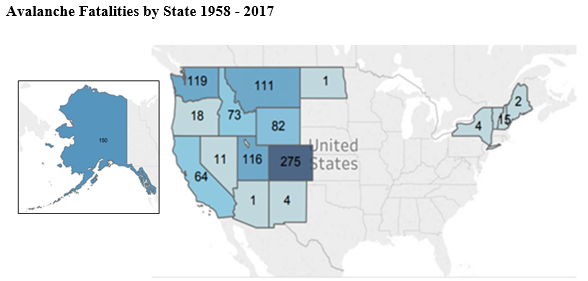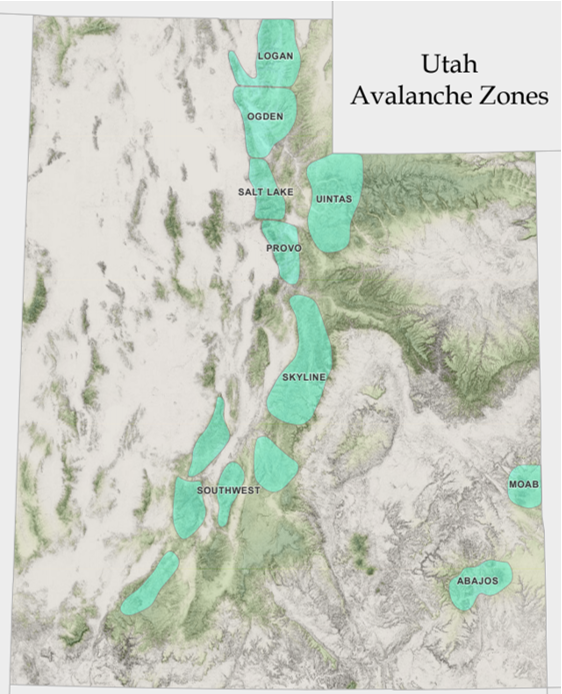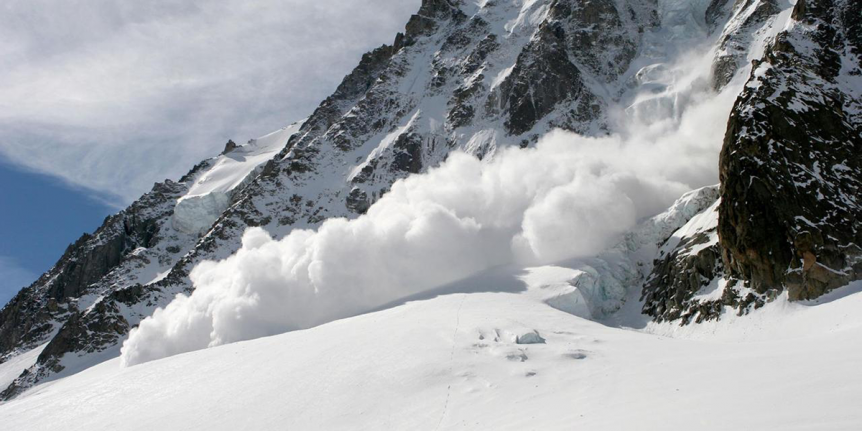An avalanche is a mass of snow, ice, and debris that slides rapidly down steep mountain slopes at speeds up to 80 mph when triggered by ground shaking, sound, or movement. Dry or slab avalanches are the most common and the deadliest in Utah. They are triggered when heavy snow is rapidly added to weaker layers. Wet avalanches occur during spring thaw events.
Avalanches pose a significant hazard in Utah’s mountains between the months of January and April, seasons of heavy snow accumulation and unstable snowpack conditions. Weather, terrain, topography, and snow conditions also impact avalanche activity.
Avalanches are one of the deadliest natural disasters in Utah accounting for 52% of severe weather related deaths and claiming 117 lives in the state between 1958 and 2017. Outdoor recreationalists are at the highest risk of avalanche exposure, not just backcountry visitors but also skiers and snowboarders involved in fatal avalanches at nine of Utah’s 14 ski resorts. Highway 210 in Utah leading to the Town of Alta has the highest avalanche hazard rating of any major roadway in the country. To address these risks, UDOT and every ski resort in the state has an avalanche forecasting program.
Noteworthy Utah avalanche mitigation projects completed in the last five years include the construction of a permanent snow deflection structure in Park City and installation of Gazex detonation devices and snow fences above the town of Alta. Davis County has installed electronic avalanche warning signs in Farmington Canyon to educate backcountry users about current avalanche dangers.


Park City Deflection Dam Project

The Utah Avalanche Forecast Center (UAFC) has made progress forecasting and identifying avalanche risks. By utilizing new technology UAFC is able to provide up-to-date information on their website and hotline on weather conditions, snow stability and avalanche danger ratings for areas across the State of Utah. UAFC and Utah ski resorts have also increased their efforts to educate outdoor enthusiasts and city and county emergency managers about avalanche hazards so the public can safely recreate in Utah during the winter months.
Permanent structures like the Park City deflection dam pictured above are built on mountains above inhabited areas with limited precautionary evacuation measures to limit the size of slides by stopping small avalanches before they gain momentum and impede fracture propagation. Channelizing is most effective on 12 to 20 degree slopes and is commonly used when multiple structures need to be protected.
In 2002 the State of Utah created an ordinance with avalanche hazard zoning for Salt Lake County ski areas and Big Cottonwood Canyon, Little Cottonwood Canyon, and Provo Canyon. This created a red zone where development was prohibited because avalanches were too frequent or too large to mitigate and a blue zone where residential development is allowed with engineered mitigation strategies in place.
The Town of Alta has also adopted a regulation requiring that an avalanche expert certify that any structure proposed for construction will withstand the impact of an avalanche.

